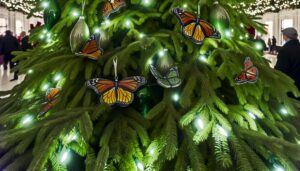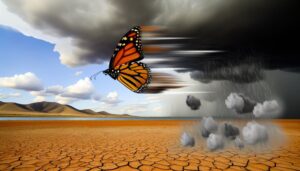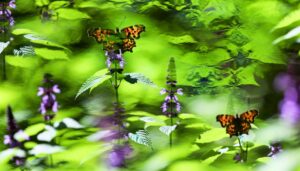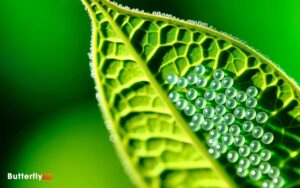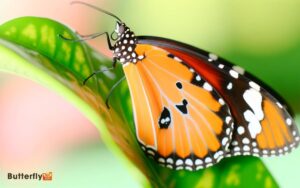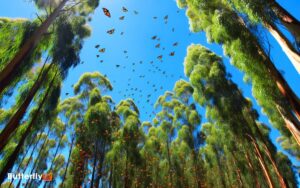Why Is Milkweed the Ideal Nursery for Monarch Butterfly Eggs?
Monarch butterfly eggs, about 1.2mm in diameter, are exclusively laid on milkweed, which is essential for larval nutrition due to its cardenolide content, rendering larvae less palatable to predators. These creamy-white eggs, characterized by ridged textures, are often placed near leaf veins to optimize nutrient access.
Hatching occurs within 3-5 days, commencing the larval stage marked by distinct striping patterns. Identifiable via magnification, these eggs are significant for ecological studies and conservation strategies focusing on habitat preservation.
Understanding the precise relationship between monarchs and milkweed is fundamental to supporting their populations and migration patterns.
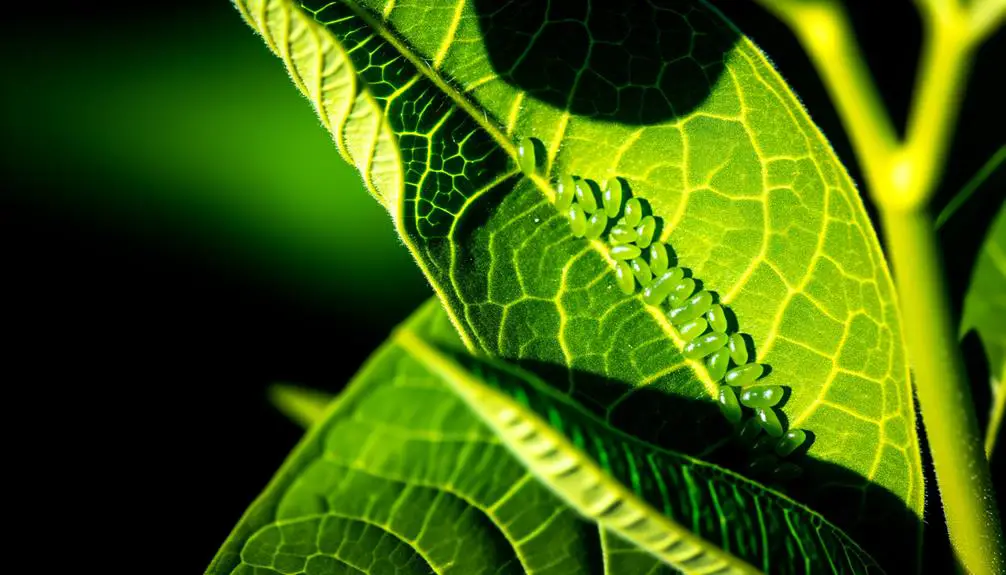
Key Takeaways
- Monarch butterfly eggs are creamy-white, around 1.2mm in height, and have a ridged texture.
- Eggs are exclusively laid on milkweed plants, near leaf veins for optimal nutrient access.
- Magnification tools may be needed to accurately identify monarch eggs due to their small size.
- Milkweed is essential for larval nourishment and protection, containing cardenolides that deter predators.
Monarch Butterfly Lifecycle
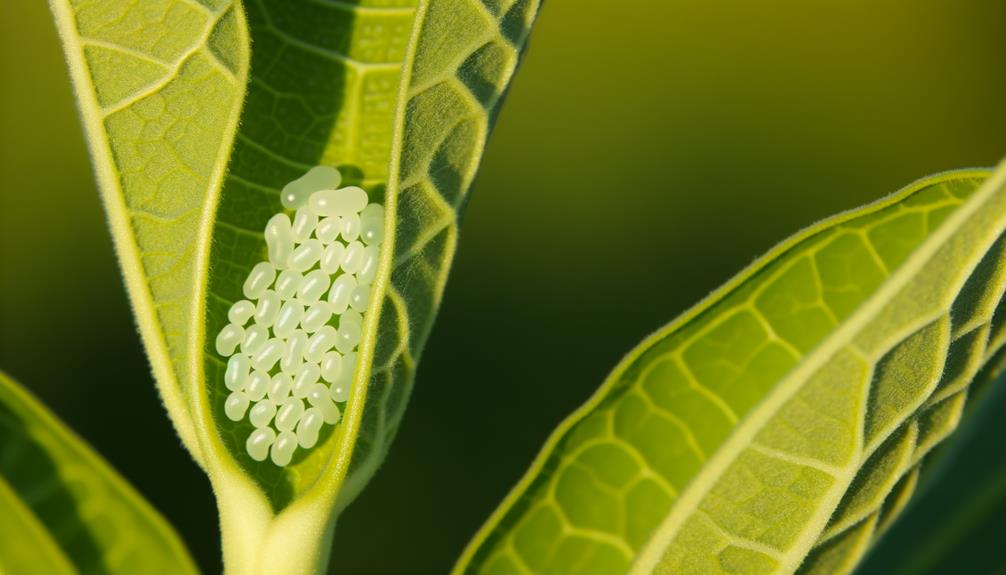
The Monarch butterfly lifecycle, frequently studied for its intricate stages and ecological significance, begins with the laying of eggs on milkweed plants.
Females deposit singular, iridescent-white ova, ensuring proximity to the essential host plant. Each egg, approximately 1.2mm in diameter, undergoes an embryonic period of 3-5 days before hatching.
This marks the larval stage, characterized by five instars, where the caterpillar undergoes successive molts, each marked by increased size and distinctive black, white, and yellow striping. After roughly two weeks of voracious feeding, the larva forms a chrysalis, initiating the pupal stage.
Metamorphosis within the chrysalis lasts around 10-14 days, culminating in the emergence of the adult butterfly, ready to perpetuate the cycle.
Importance of Milkweed
Critical to the survival and development of Monarch butterflies, milkweed serves as a primary food source and habitat for their larvae. This perennial plant genus, Asclepias, is essential for the monarch's reproductive cycle.
Female Monarchs exhibit oviposition behavior exclusively on milkweed, ensuring that emerging larvae have immediate access to crucial nourishment. The cardenolides present in milkweed leaves are sequestered by the larvae, rendering them unpalatable to predators.
Additionally, milkweed patches contribute to habitat connectivity, facilitating migratory pathways. Observations indicate that milkweed availability directly correlates with monarch population dynamics, underscoring the plant's ecological significance.
Conservation efforts aimed at preserving milkweed habitats are therefore paramount to sustaining Monarch populations, offering a tangible avenue for those seeking to protect biodiversity.
Identifying Monarch Eggs
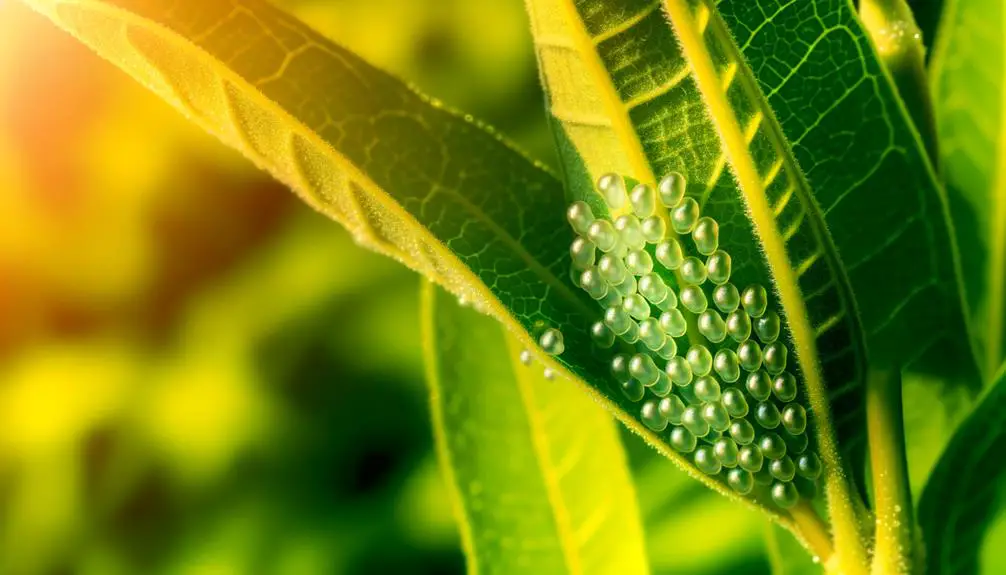
Monarch eggs, typically laid singly on the underside of milkweed leaves, are distinguishable by their creamy-white coloration and distinctive ridged texture. These ovate structures, approximately 1.2 millimeters in height, exhibit pronounced vertical ridges converging at the apex, providing a unique texture discernible under magnification.
Their placement on the milkweed, often near the leaf veins, optimizes access to essential nutrients for the emerging larvae. Observing these eggs requires meticulous examination, often necessitating magnifying tools to differentiate them from similar insect eggs.
Identification accuracy is paramount for ecological studies and conservation efforts, ensuring precise data collection. Such detailed scrutiny not only advances scientific knowledge but also empowers individuals to actively partake in monarch preservation.
Protecting Milkweed Habitats
Safeguarding milkweed habitats is essential for the survival and proliferation of monarch butterfly populations.
Milkweed (Asclepias spp.), the sole host plant for monarch larvae, necessitates preservation efforts to combat habitat loss due to urbanization, agricultural practices, and pesticide use.
Conservation strategies should prioritize the establishment of milkweed corridors, which facilitate gene flow and migration routes.
Implementing buffer zones around agricultural fields can mitigate pesticide drift, ensuring milkweed viability.
Additionally, public and private land management practices must incorporate native plant restoration, emphasizing milkweed species.
Engaging local communities in conservation initiatives through educational programs can foster a collective responsibility for habitat preservation.
Rigorous monitoring and adaptive management will be vital in maintaining and enhancing these critical ecosystems.
Supporting Monarch Populations
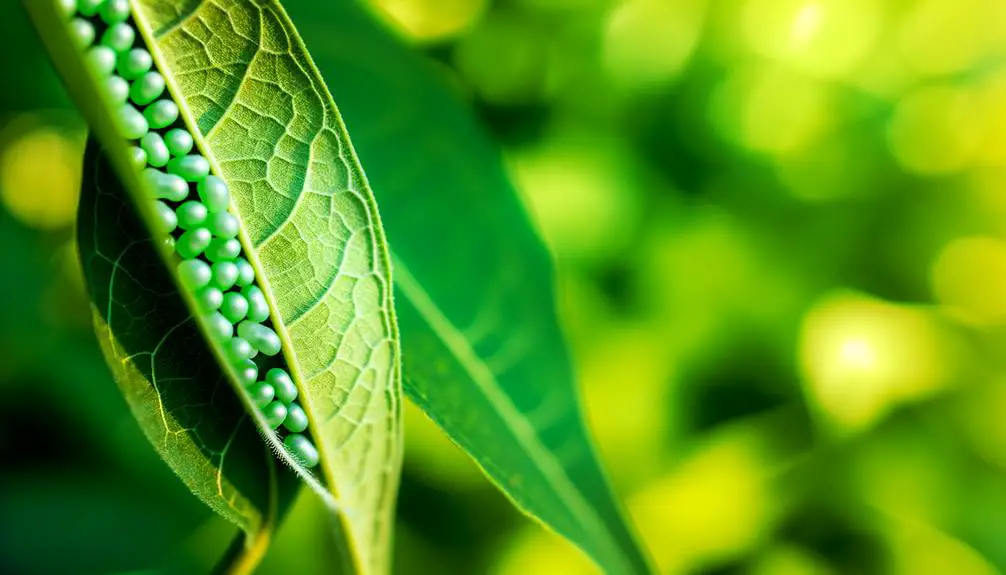
Building on the efforts to protect milkweed habitats, targeted initiatives aimed at bolstering monarch populations must be strategically implemented to address threats such as dwindling food sources, climate change, and predation.
These initiatives include habitat restoration, wherein milkweed and nectar plants are systematically reintroduced into monarch migratory corridors.
Monitoring climatic variables, such as temperature and precipitation, is essential to predict and mitigate adverse effects on monarch lifecycles.
Predator control measures, such as creating predator-free zones, are critical to reducing larval mortality.
Citizen science programs, empowering individuals to participate in data collection and habitat preservation, further amplify conservation impact.
Conclusion
In summary, the intricate relationship between monarch butterflies and milkweed underscores the critical importance of preserving these habitats.
Identifying and protecting monarch eggs on milkweed are essential steps in ensuring the species' survival.
In the domain of conservation, it is clear that 'an ounce of prevention is worth a pound of cure.'
As a result, concerted efforts to support monarch populations through habitat conservation and public awareness are imperative for maintaining ecological balance and biodiversity.

